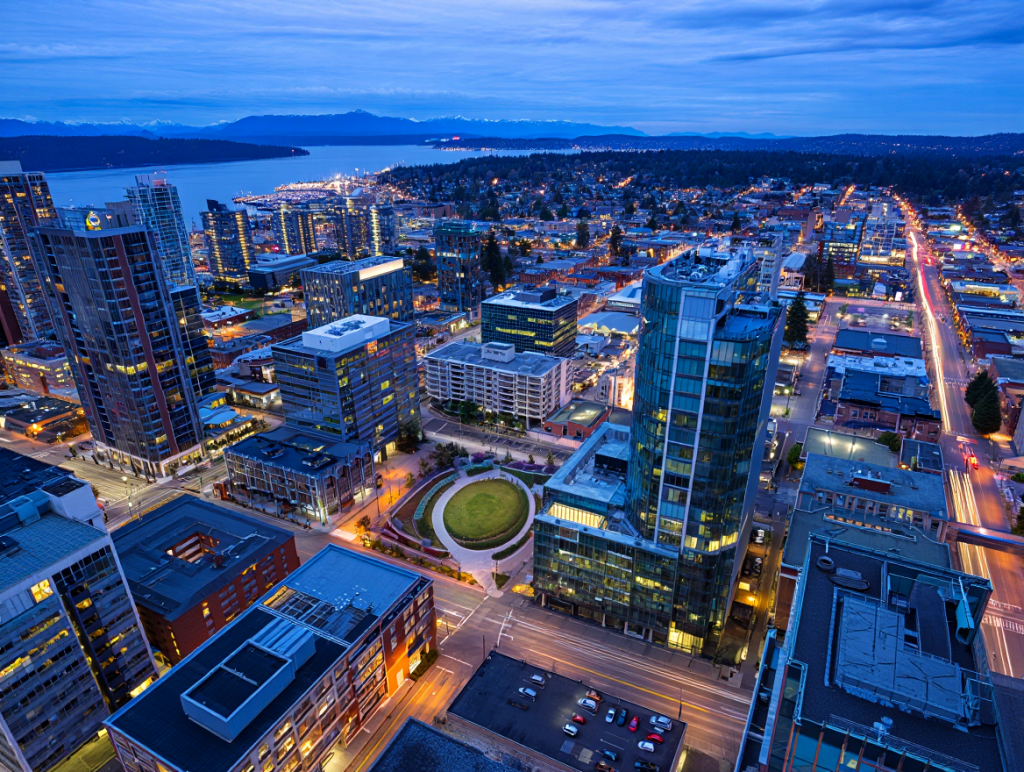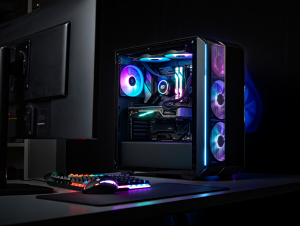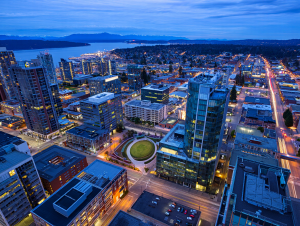
Over the past two decades, Bellevue, Washington has undergone a stunning transformation from a quiet Seattle suburb to a booming tech and corporate hub—bringing both remarkable economic growth and dramatic increases in housing prices. Once known primarily for its shopping centers and leafy neighborhoods, Bellevue is now home to some of the world’s largest companies, sleek high-rises, and one of the hottest real estate markets in the Pacific Northwest.
At the heart of this transformation is the rise of big business. From Microsoft’s eastside expansion to Amazon’s aggressive leasing strategy and the influx of tech startups and global firms, Bellevue has become a magnet for high-paying jobs, wealthy professionals, and new development. But this prosperity has come at a cost: housing affordability.
The Corporate Invasion: From Bedroom Community to Tech Powerhouse
In the early 2000s, Bellevue was largely considered a well-off but quiet alternative to Seattle. With a population of around 110,000 in 2000, it was a place of cul-de-sacs, good public schools, and proximity to nature. While Bellevue was no stranger to business—home to Microsoft’s first expansion outside of Redmond and headquarters of companies like Expedia—its economic footprint was modest compared to Seattle.
That changed dramatically in the 2010s.
Amazon, in search of new office space and looking to decentralize its Seattle campus, began leasing space in Bellevue at an aggressive pace. By 2020, the company announced plans to bring over 25,000 employees to Bellevue by 2025. Meta (formerly Facebook), Google, T-Mobile (whose U.S. headquarters have long been in nearby Factoria), and Chinese tech giant ByteDance also followed suit. Downtown Bellevue, once home to department stores and office parks, saw a wave of construction: skyscrapers, luxury condos, and tech campuses.
The city’s population exploded, reaching nearly 152,000 by 2024. But more importantly, the average income of Bellevue residents began to skew dramatically upward, creating a new class of high-earning renters and homebuyers.
Housing Prices Surge
The rise of big business brought an immediate and lasting impact on Bellevue’s housing market. According to data from the Northwest Multiple Listing Service (NWMLS), the median home price in Bellevue in 2005 was roughly $430,000. By 2024, that number had skyrocketed to over $1.6 million—an increase of nearly 275%. Condominium prices saw a similar rise, with luxury high-rises fetching record prices.
Chart: Bellevue Housing Prices vs. Business Growth (2005–2024)
| Year | Median Home Price | Major Corporate Milestone |
|---|---|---|
| 2005 | $430,000 | Microsoft expands in Redmond/Bellevue |
| 2010 | $530,000 | Expedia moves HQ to Bellevue |
| 2015 | $810,000 | Amazon begins leasing in downtown |
| 2020 | $1,100,000 | Meta and Amazon announce major expansions |
| 2024 | $1,600,000 | Over 30,000 new tech jobs in Bellevue |
As high-salaried workers flooded into the city, the competition for housing intensified. Developers responded by building high-end condos and apartments in the city core, but these new units did little to slow price increases across single-family neighborhoods like West Bellevue, Medina, and Bridle Trails. In these enclaves, teardown homes now routinely sell for over $2 million, replaced by modern mansions aimed at tech executives.
Renters Feel the Squeeze
It’s not just homeowners feeling the effects. Renters in Bellevue have seen their housing costs climb dramatically as well. According to Zillow, the average monthly rent for a two-bedroom apartment in 2005 was around $1,200. Today, it’s closer to $3,200. In some of Bellevue’s luxury towers, rents surpass $5,000 per month.
This surge has pushed middle-class families, teachers, and service workers further out to suburbs like Renton, Issaquah, and Bothell. Commuting patterns have shifted as a result, leading to increased traffic congestion and growing pressure on regional transit systems.
Urban Transformation and Gentrification
To accommodate the influx of jobs and people, Bellevue has aggressively rezoned its downtown and invested in infrastructure. The upcoming East Link Light Rail line, scheduled to open in 2025, will connect Bellevue to Seattle and Redmond, further increasing the city’s desirability.
However, these improvements have also fueled gentrification. Neighborhoods like Crossroads and Lake Hills, once known for their ethnic diversity and affordability, are now facing rapid redevelopment. Small businesses and immigrant-owned stores are being priced out as new mixed-use buildings take their place.
“Bellevue used to be a hidden gem for working-class families,” says Maria Alvarez, a community organizer and longtime resident. “Now it’s almost impossible for young families to buy a home here, and longtime renters are being displaced.”
Winners and Losers
The influx of big business has undeniably elevated Bellevue’s economy. The city now boasts one of the highest median household incomes in the country—over $140,000, according to the U.S. Census. Unemployment is low, crime rates are down, and city coffers are flush with revenue from property and business taxes.
But the benefits have not been evenly distributed. The wealth gap has widened, and economic inequality has become more visible. Tent encampments, once rare on the Eastside, have begun appearing. Public schools in higher-income neighborhoods are thriving, while others struggle with funding and rising student homelessness.
Government Response and Policy Dilemmas
City leaders have made efforts to mitigate the housing crisis. Bellevue has updated zoning to allow for more density, introduced incentives for affordable housing development, and partnered with nonprofits to build subsidized housing. However, critics argue the pace of affordable housing construction has not kept up with demand.
In 2022, the city adopted a Housing Action Plan that set ambitious goals for new development—particularly “missing middle” housing like duplexes and townhomes. But implementation has faced resistance from some residents worried about changing the character of their neighborhoods.
What Comes Next?
With Amazon still planning to expand its Bellevue footprint, and the light rail system promising better connectivity, the city’s economic rise shows no signs of slowing. But the question remains: can Bellevue maintain its prosperity without pricing out its workers and fracturing its social fabric?
Experts suggest that Bellevue’s future will depend on its ability to embrace density, diversify housing types, and expand its transportation network. The city’s challenge is to build not just taller and faster, but smarter and more inclusively.
“Bellevue is at a crossroads,” says Dr. Heather Harwin, an urban development researcher at the University of Washington. “It can either become a tech enclave for the elite or a model for sustainable urban growth. But it has to act quickly.”
Conclusion
Over the past 20 years, the establishment of big business has propelled Bellevue into the national spotlight as a vibrant economic engine and tech capital. But that success has come with profound impacts on its housing market, social dynamics, and urban landscape. As the city looks ahead, its leaders—and its citizens—must grapple with how to balance growth with affordability, innovation with inclusion, and prosperity with preservation.
If Bellevue can strike that balance, it may well serve as a blueprint for the next generation of American boomtowns. If not, it risks becoming a cautionary tale in the age of corporate urbanism.



